Latest IMOCA 60 hardware
While it may have proved otherwise in the Route du Rhum, the two newest IMOCA 60s, Virbac Paprec 3 and Foncia have been showing a clean pair of heels to the older generation entries in the Barcelona World Race (yes, until Foncia broke her mast). Part of this of course is that the two newest boats also have two of the most experienced and successful crews in the class. Ironically a brief stopover in Recife also left these two on the correct side of the course to fly down the South Atlantic in the best conditions as the competition wallowed. However it was also they that were also leading down the North Atlantic.
Virbac Paprec 3 and Foncia are two of the three latest generation IMOCA 60s from the partnership between well known multihull designers Marc van Peteghem and Vincent Lauriot Prevost (VPLP) and Guillaume Verdier. Following on from Marc Guillemot’s Safran and Kito de Pavant’s Groupe Bel (which to be honest didn’t achieve too much success until after the last Vendée Globe when the former won the Transat Jacques Vabre) the VPLP-Verdier partnership at present has the lion’s share of new IMOCA 60 builds. Beyond these Juan Kouyoumdjian has designed the latest steed for Bernard Stamm and Owen Clarke have a secret squirrel project believed to be for Spanish former Barcelona World Race competitor and Vendée Globe skipper, Javier Sanso.
The three new VPLP-Verdier boats all have their differences, the most radical being of course Michel Desjoyeaux’s Foncia which we featured back in November (read about this here). The latest PRB for 2004-5 Vendee Globe winner Vincent Riou, had her hull built from Safran’s moulds by Safran’s builder Thierry Eluère, while the team built their own deck and the whole deal was put together by CDK in Port la Fôret. She was the first to be completed, launched last March after a seven month build.
Virbac Paprec 3 had her own moulds built down in New Zealand at Cookson, while the hull for Foncia was built, surprisingly, on our own shores by Green Marine in Lymington and finished by Michel Desjoyeaux’s company Mer Agitée in Port la Foret
According to designer Guillaume Verdier, PRB is an evolution from Safran and Groupe Bel, but “in a very bright way. It is the same hull moulds [as Safran] but he [Vincent Riou] really exploited everything to the extreme in structure and details. He did a great job that way. He has his own ideas with the fittings and the wing mast.
“On Virbac the idea was to try and make a boat where you not only looked at the righting moment of the boat, but at the longitudinal righting moment too. The idea was to try and use less water [ballast] and to raise the longitudinal righting moment, while fitting the rule in transverse. So we have boats that have lots of buoyancy in the bow and that raises the longitudinal stability of the boat.”
So after generations of pointy-bowed offshore race boats, designed to ‘cut through waves’, VPLP-Verdier have to some extent reversed that trend. The reasoning for this, says Verdier, is that if you drag a hull through the water it is better to drag the volume over the hull’s entire length. “If your boat was short with a plank that brought it up to 18m, that plank would only bring some wetted area and no volume, so it is better to bring it from the bow to the stern without making too big a trough in the middle. With lots of volume in the bow it raises the longitudinal [righting moment], - what we call BM longitudinal - the inertia in pitch is bigger, so it means that you don’t have to need so much water [ballast] to keep the boat flat.”
A fatter bow equals more buoyancy forward and this means that off the wind the bow is less inclined to bury itself into the back of waves. But there are of course drawbacks. One significant one is that without the razor sharp bow, the motion of the boat in a seaway is much harder on its crew.
“When you go through waves it is more violent, because you have some resistance from the bow,” admits Verdier. “So we needed to make as sharp a water entry as possible above the water line - that’s why I don’t like flat bows.”
Virbac Paprec 3 Technical Manager Nicolas Abiven gives his thoughts on the bow profile: “Most of the time they [IMOCA 60s] are sailing with the bow, the last 50cm, out of the water, so you only really sail with them with the bow in the water when there are very light conditions so the drag is more friction drag than resistance drag. I think this is the best way today to make offshore hulls.”
Foncia, with her tumblehome and novel water scoop-style foredeck, represents a further development, where Verdier says they tried to optimise the boat to the IMOCA 60 rules’ new righting moment maximum of 32 tonne metres. “32 tonne metres happens at a big heel angle, so you don’t need to have the side of the boat [ie the upper part of the topsides] when you are at 40° of heel. That volume near the deck is not useful and you lose some righting moment because of it, so it was more efficient to cut it away.” An additional benefit is that this is also good structurally as it keeps the topsides stiffer.
The school still seems to be out on whether a heavy powerful boat is faster than a more nimble lighter one. With the size of the sail plan now effectively limited by the IMOCA 60 rule’s mast height restriction, one imagines that going light to maximise the power to weight ratio is the only path left for designers, marking the end of the grunty Pindar-Hugo Boss style of boat.
Going light is certainly the corner of the box the VPLP-Verdier boats are in. The teams are paranoid about revealing exact figures for the weight of their boats, but talk is of 7.5-8 tonnes for the new VPLP-Verdiers, compared to the last generation Farr boats at 9-10 tonnes and Pindar-Hugo Boss at closer to 12, ie a colossal range.
Guillaume Verdier’s view is that if you need weight in an IMOCA 60 you can bring it on board in the form of water ballast. He adds “to go through transitions, to have an all-round performance it is better to be light, but that doesn’t mean a heavy boat can’t win a race. Ultimately if we can make a boat that has no water inside, that would be ideal.” It is believed that typically IMOCA 60s today can pump on board 3-4.5 tonnes of water ballast, down from the 5 tonnes previous generations of heavier IMOCAs could in theory carry. While we don’t have exact figures for how much the latest boats can pump on board, with the boats being lighter it could still represent up to 50% of overall displacement.
Verdier believes that there is a small flaw in the latest iteration of the IMOCA 60 rule: 32 tonne metres of righting moment is almost too much for the new maximum permissible rig height of 29m off the water.
Another area where there remains great variety between IMOCA 60s is in the rigs. Even among the three new VPLP-Verdiers, Foncia has a rotating wingmast, free of both spreaders on the mast and deck spreaders. PRB has a similar wingmast, but with deck spreaders. Virbac Paprec 3 has a spindly fixed rig with only two sets of skeletal spreaders on the rig and no deck spreaders, which is presumably the lightest option.
 “Virbac has quite a fancy rig,” says Verdier. “It is quite simple but it has only two spreaders, very flexible and only two back stays. Both masts [fixed and wingmast] in terms of weight are interesting, but the compartment is totally different. I am open to both.
“Virbac has quite a fancy rig,” says Verdier. “It is quite simple but it has only two spreaders, very flexible and only two back stays. Both masts [fixed and wingmast] in terms of weight are interesting, but the compartment is totally different. I am open to both.
“I am working on a new mast that I have designed for Safran. It is a classic pre-stressed mast with fine tuning, also because I find it difficult to calculate well a wingmast.” This, Verdier says, is because the load case with a spreader-free wingmast is so dynamic. The rig decision for skippers therefore seems to be more a philosophical rather than a mathematical one.
So does the theory still hold true that a wingmast is potentially more efficient, while a fixed rig is lighter? “You have to look at it globally, because when you go around you are reefed a lot and sometimes with the wingmast when they are scared they don’t turn it to big angles of rotation that is needed for optimum air flow. So if you drag a wingmast [that is not rotated properly] it is not very good,” says Verdier.
The deck spreaders on PRB, as has been pointed out since Yves Parlier first introduced them on his Aquitaine Innovations Open 60 some 15 years ago, allow a reduction in weight aloft of the standing rigging, but they have also been found to offer a convenient sheeting point for smaller downwind headsail. However other IMOCA 60s without them have got around this by having removable jockey poles, as Verdier points out that the deck spreaders are not always in the right place.
Another development with the VPLP-Verdier boats is their daggerboards. Boards that develop vertical lift - not to get the boats airborne, but to reduce wetted surface area times when that is required – is not new, but prior to the last Vendée Globe Marc Guillemot’s Safran was the first to be fitted with curved boards, similar to those fitted in ORMA 60 trimaran floats. With the latest generation of VPLP-Verdier designs PRB and Virbac have an evolution of these, while Foncia has larger straight boards, fitted well away from the centreline and that are inclined to generate lift.
According to Verdier (and MichDes) Foncia's boards develop a similar amount of vertical lift to the curved boards.
“It is a combination of how the daggerboards and the keel are working together,” says Verdier of their latest curved daggerboard development. “It is something we found in fluid [dynamics] which is interesting and it is very optimised for reaching and downwind. Upwind it is not as good, but it is a choice you make. You have to accept to lose somewhere and make a good trade off.”
One of the reasons Desjoyeaux is believed to have gone for the straight boards is that with the Foncia’s tight build time he had existing moulds for the straight daggerboards already. However Verdier says that the curved boards have another feature. “With the curved daggerboard you have more dampening when you go through waves. We believe it acts as a spring damper. And you don’t have the same lift distribution along the length of the daggerboard.”
Typically Verdier says that the crews rarely have the boards partly down, but surprisingly he adds that the way they used them varies from boat to boat. He won’t elaborate, so this is something we’ll try and find out more about at the end of the Barcelona World Race.
During the last Vendée Globe, several boats experienced problems with their twin kick-up rudders, however the VPLP-Verdier designs were not among them and Verdier says that they have retained the same safety factor in their engineering for their new trio, although we understand the safety factor in the steering system itself has been raised. Again Foncia is the exception where Desjoyeaux used some existing tooling that he had. However Verdier says where there has been change is in the rudder lifting/kick-up mechanism that now allows the blades to be swapped out in the event of one being damaged.
Tomorrow we look in more detail at Virbac Paprec 3 and PRB
Photos below from James Boyd/www.thedailysail.com
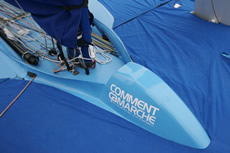 |
|
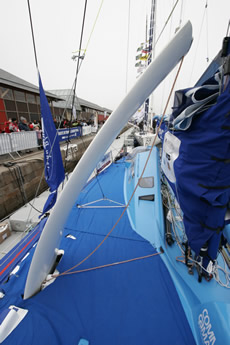 |
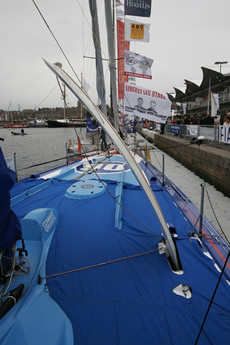 |
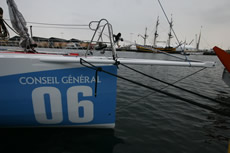 |
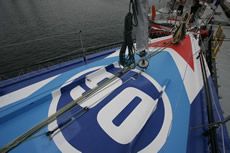 |
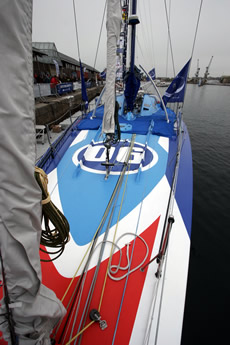 |
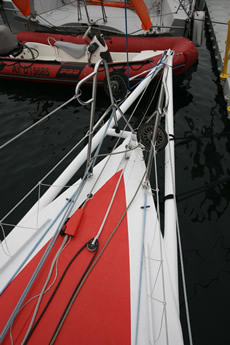 |
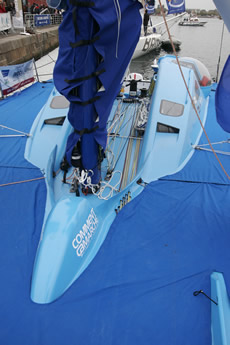 |
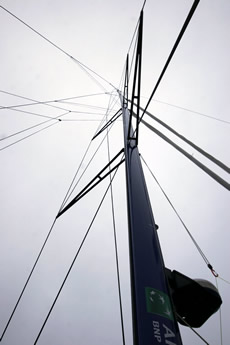 |
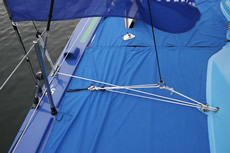 |
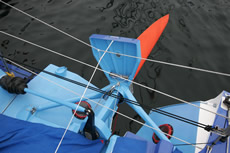 |
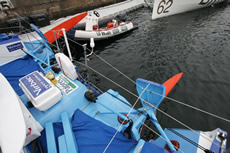 |
|
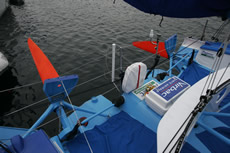 |
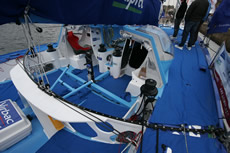 |
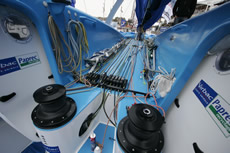 |
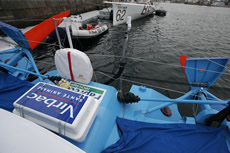 |
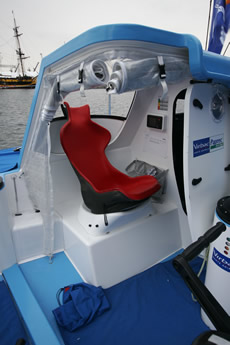 |
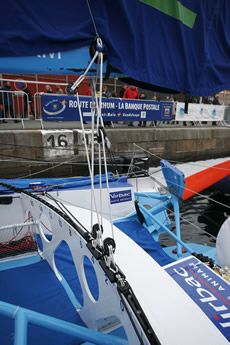 |
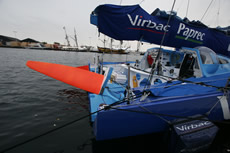 |
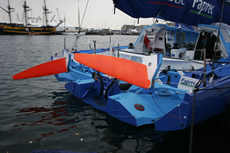 |
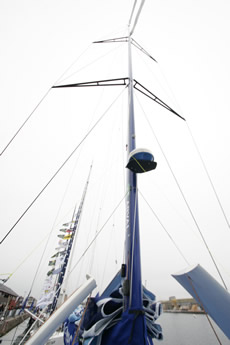 |

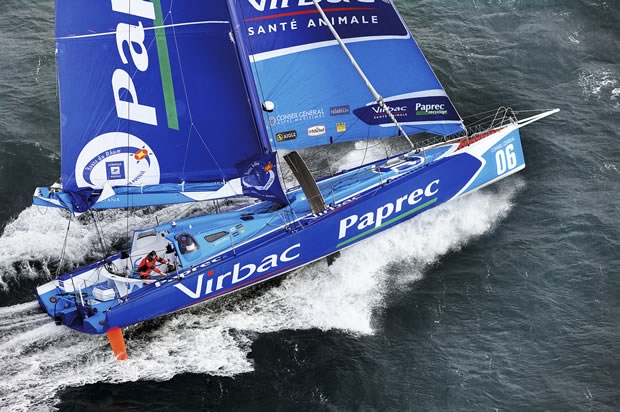
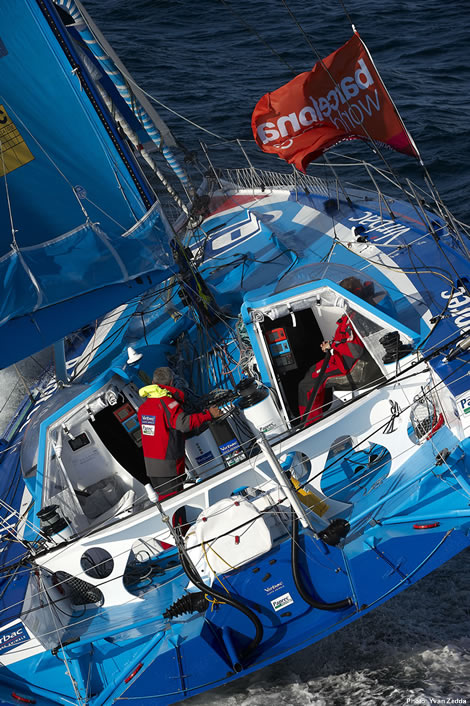
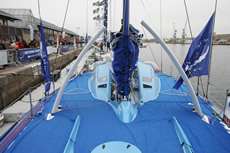
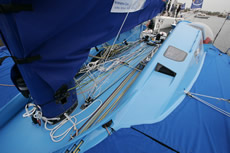









Latest Comments
Add a comment - Members log in